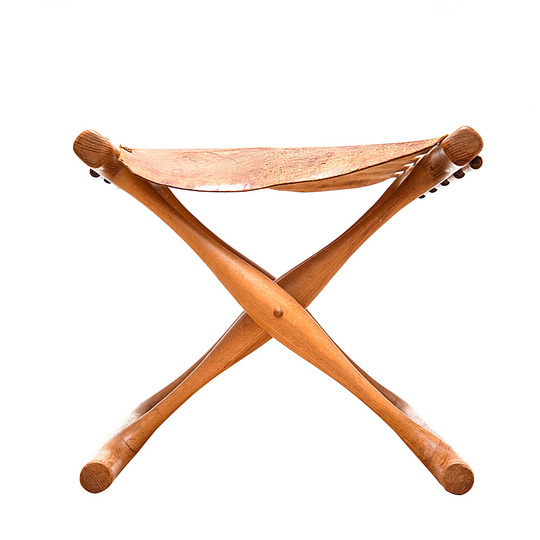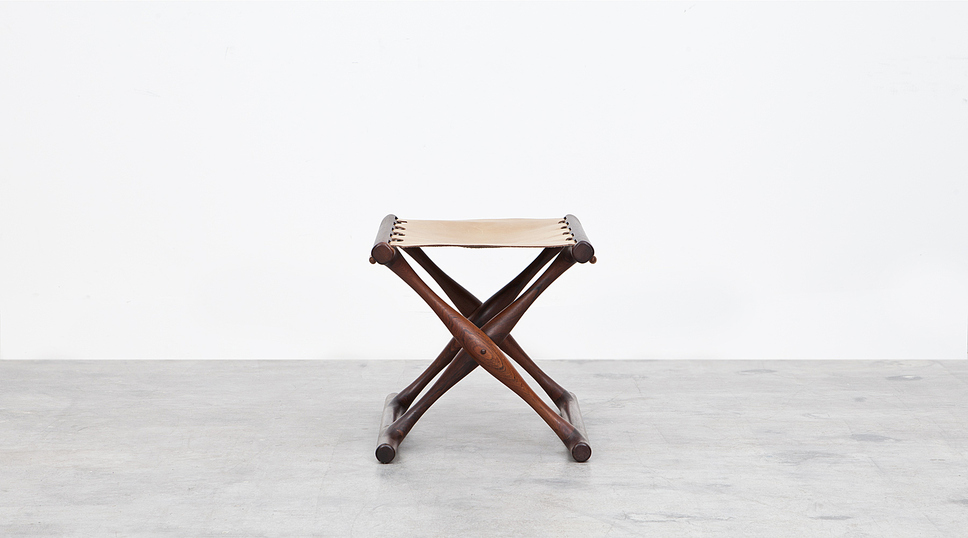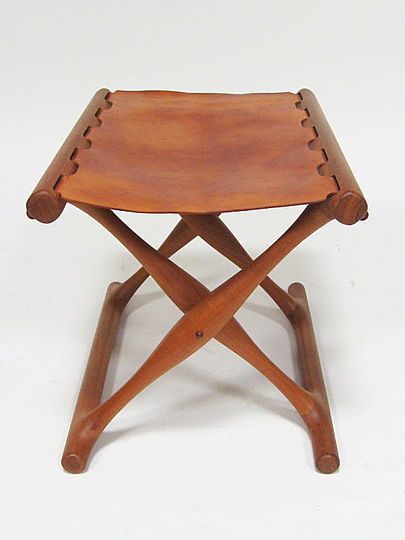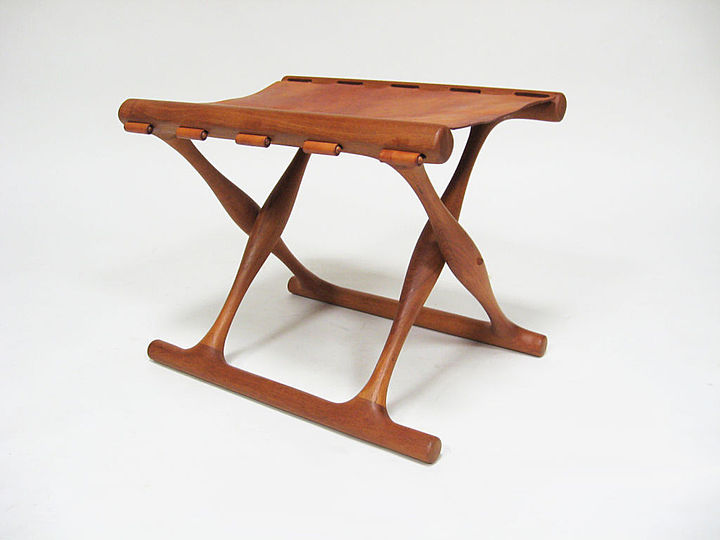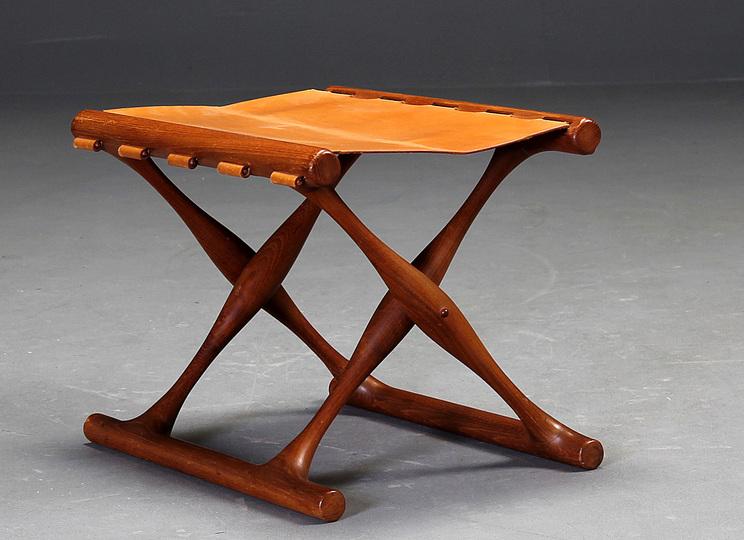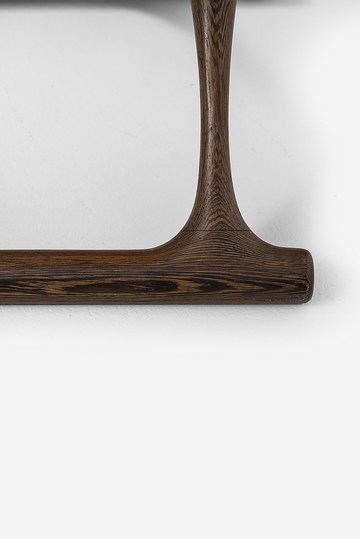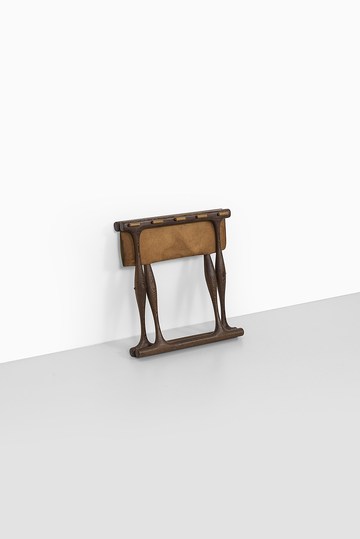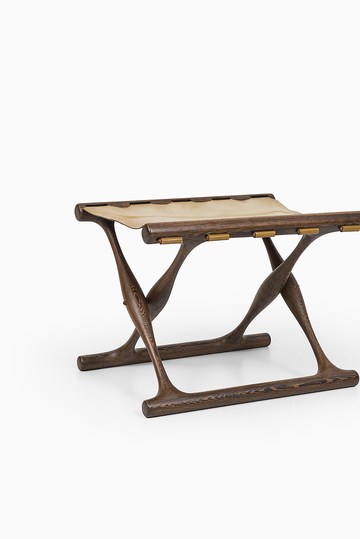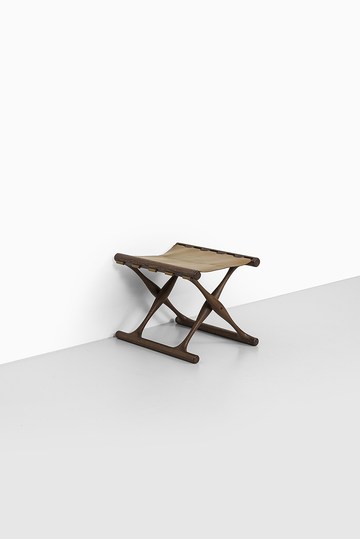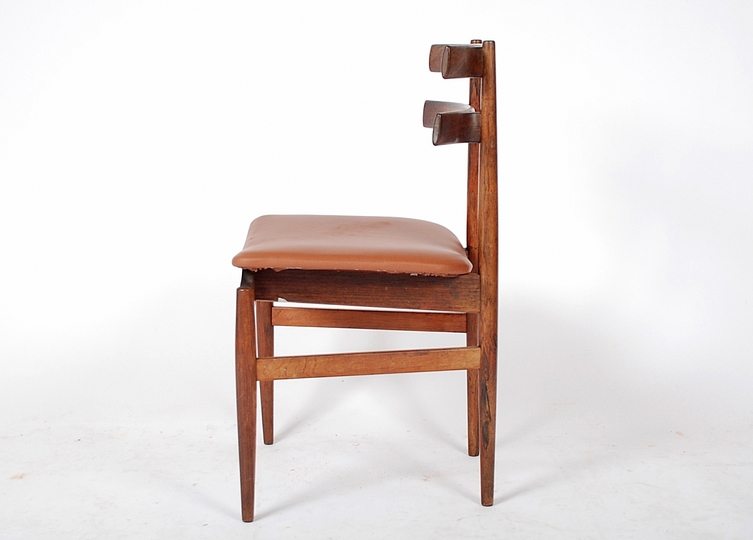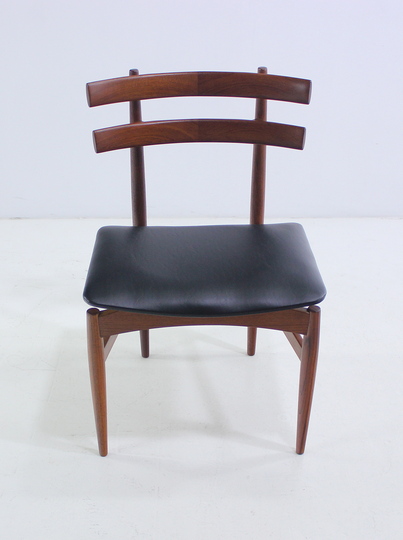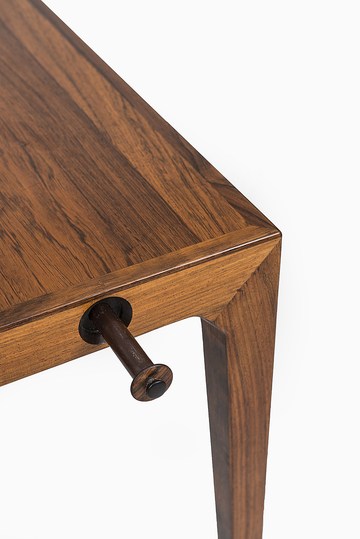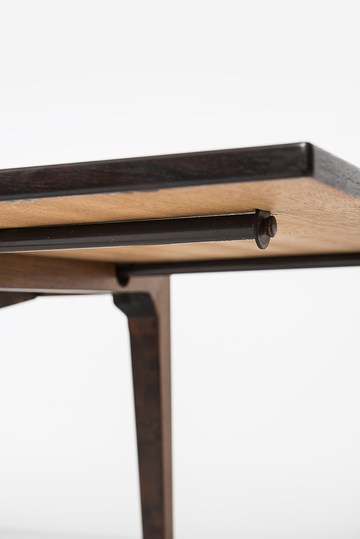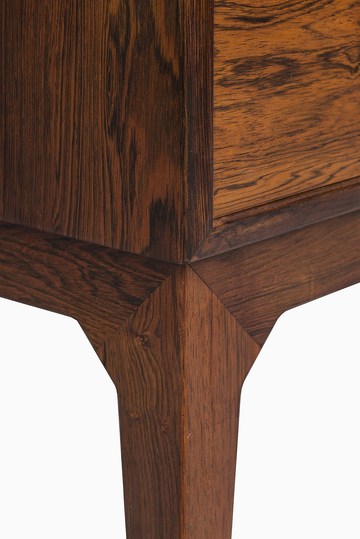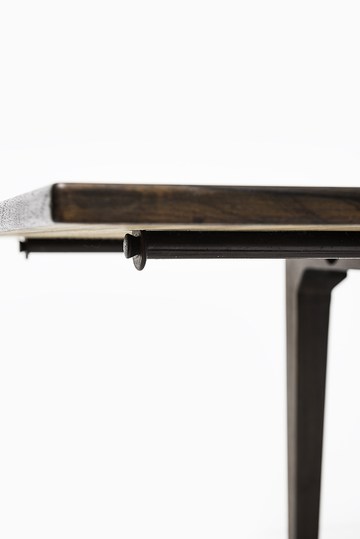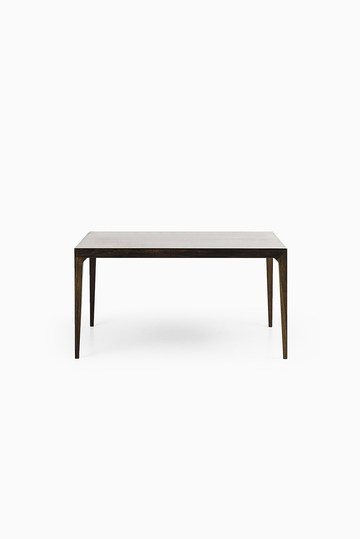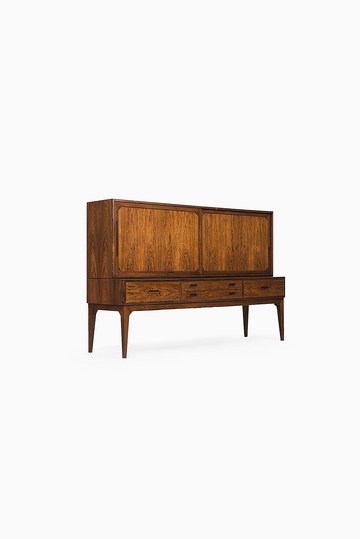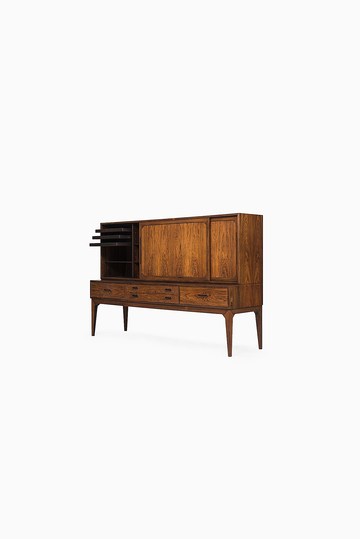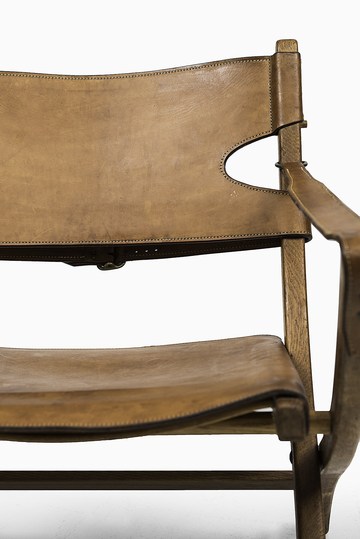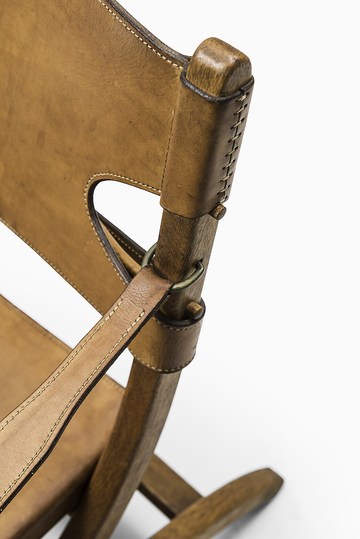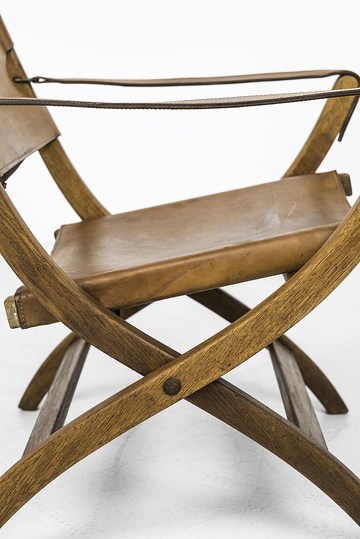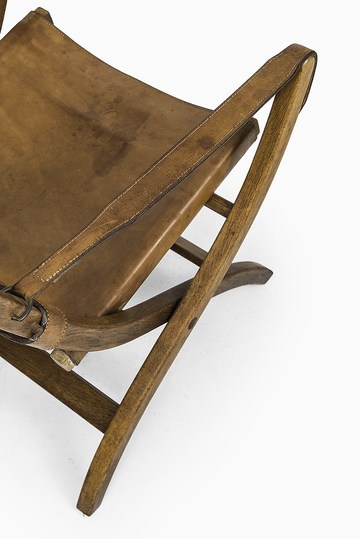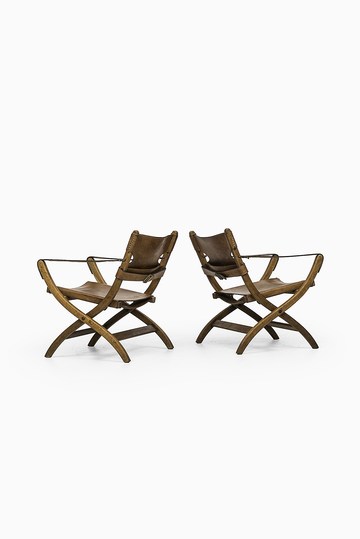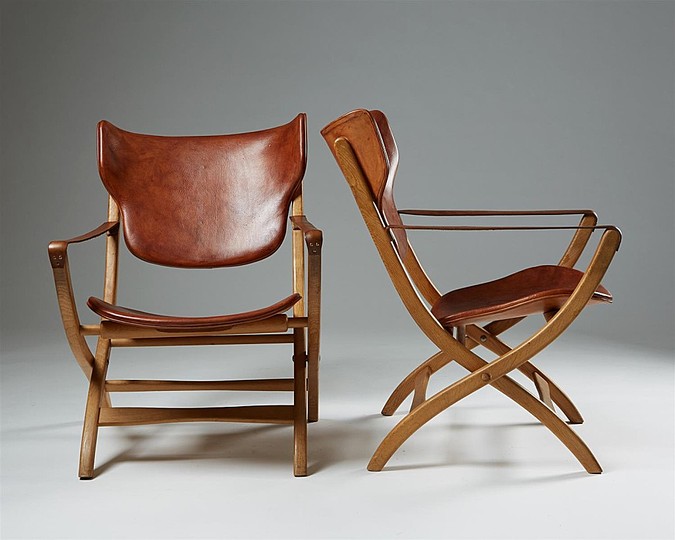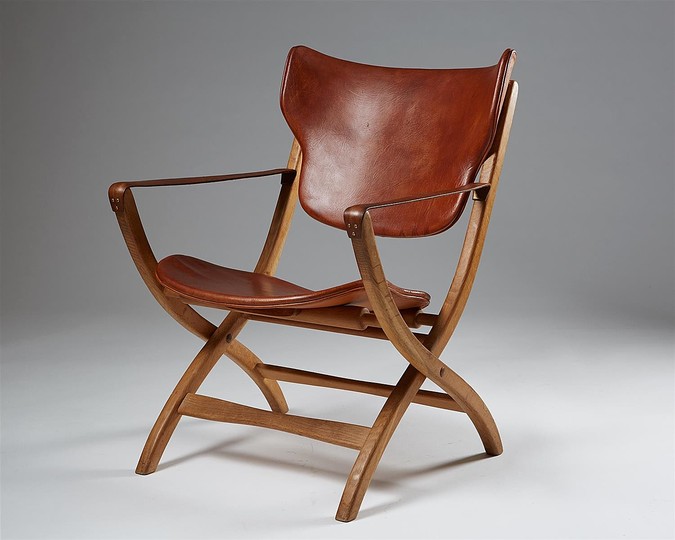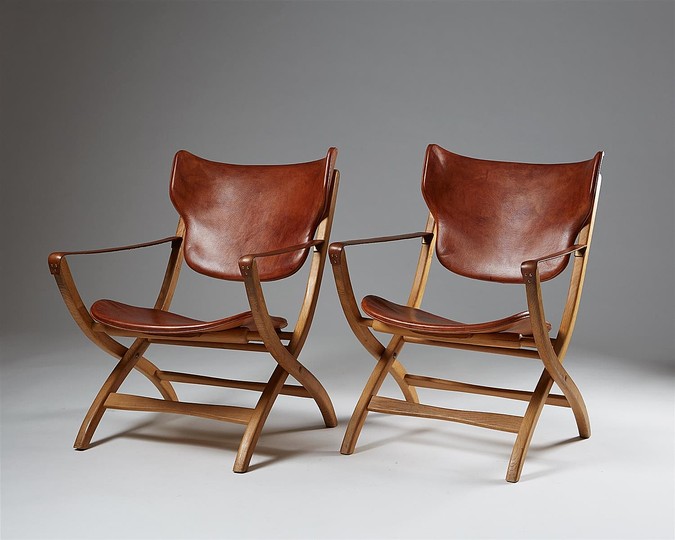Poul Hundevad and the Guldhøj chair
The large barrow from the Bronze Age with the promising name of Guldhøj (Gold Hill) in Southern Jutland was excavated in 1891. Among the objects in the barrow was a folding chair, very well preserved, made of ash wood with carved patterns featuring black pitch inlay. The seat was of otter skin. The folding chair has been dated to the second half of the 1400s BC. The folding chair from Guldhøj is the only completely preserved chair from the Bronze Age in Europe.
Poul Hundevad was born in Vamdrup, Denmark in 1917. He trained as a carpenter and, for a time, owned his own cabinetmaking shop and furniture factory. In 1960, he began production of his most famous work, the Guldhøj chair. The design was a direct copy of a folding chair found in a burial mound in Vamdrup that dated back to the Scandinavian Bronze Age. Hundevad measured the original chair, streamlined the design, and put it into production, using four different types of wood and leather seating in light and dark shades.
Hundevad was also recognized for his dining chairs, tray carts, sideboards, and bookcases.
Poul Hundevad was born in Vamdrup, Denmark in 1917. He trained as a carpenter and, for a time, owned his own cabinetmaking shop and furniture factory. In 1960, he began production of his most famous work, the Guldhøj chair. The design was a direct copy of a folding chair found in a burial mound in Vamdrup that dated back to the Scandinavian Bronze Age. Hundevad measured the original chair, streamlined the design, and put it into production, using four different types of wood and leather seating in light and dark shades.
Hundevad was also recognized for his dining chairs, tray carts, sideboards, and bookcases.
Magazines
